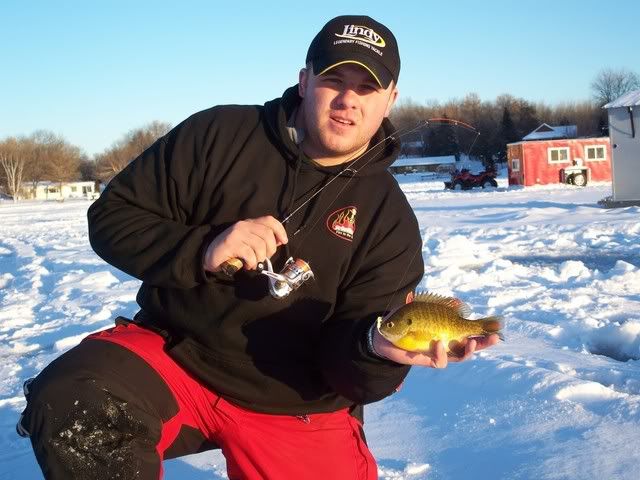The most frustrating thing in ice fishing is knowing you are on fish and seeing them on your flasher or underwater camera, but not being able to get them to bite. Through the course of a winter I encounter this quite often on the metro lakes I fish. Often times it is caused by fishing pressure due to the lake being popular or heavily fished due to a tournament, but it can also be caused by changes in weather patterns. Many anglers either immediately switch to micro presentations or throw in the towel all together. However, in tournament situations, giving up really isn’t a viable option, so I have been forced to come up with a variety of different tactics for catching these inactive fish.
One of the most important things to consider when targeting neutral or negative fish is how your jig appears in the water. Often times fish haven’t completely shut down, they simply want something presented in a very specific way. More often than not this means a horizontal presentation. While fish can be caught on vertical presentations when they are actively feeding, switching to a horizontal presentation is sometimes the only way to catch them. I have had days when my jig being off horizontal by 10 degrees would make the fish ignore my offering altogether. The best way to ensure your jig fishes properly is to view it in water before you get on the ice. Whether it be by putting it in a bucket of water, or the tank on the back of the toilet, knowing how your jig will sit in the water with different knots, plastics, jigging motions, etc. is invaluable. My favorite knot for ice fishing is the improved clinch knot. It tightens up against the eyelet of the jig and allows me to adjust how the lure sits in the water. This is very helpful in that not every lure will sit horizontal when the knot is straight up off the eyelet. An important thing to pay close attention to is the diameter of your line. If you are using too heavy of a line, there will be loose coils between your rod tip and the jig. This can cause missed fish due to light bites not being felt at the rod tip or seen on a spring bobber. The fish will sometimes bite light enough to only take the slack out of the line but not move a spring bobber. With today’s modern reels and advancements in line strength 1 to 2lb test is not too light with a proper drag setting, and will allow almost any jig to tighten the line.
While a horizontal presentation is the first thing I will try during a light bite, it doesn’t mean it is the only one that will work. I have had fish that will be picky enough to choose only a strictly vertical presentation as well. Sometimes they even want a presentation that is at an angle. This is why one of my rods is always rigged up with a Lindy Genz Bug. The jig is designed in such a way that by rotating my knot, I can adjust from vertical to horizontal or anything in between in a matter of seconds instead of having to retie with numb fingers. Another variation I was shown by one of the NAIFC competitors was the verti-zontal presentation. This consists of a vertical jig with a plastic such as a Micro-Mino half threaded onto the hook so that the plastic stays horizontal. The tail moves quite a bit with even the slightest quiver of the rod tip when rigged this way.
Another thing to consider is how to jig the lure. A lot has been said about how an angler should or shouldn’t jig. For me though, I always start with a pound of some sort. For those of you who aren’t familiar with the pound, it is achieved by pounding down the tip of your rod like you would with a hammer but on a much smaller scale. You are trying to get the jig to almost rock, where the head of the jig stays almost still but the plastic or bait bucks around like the lure is trying to swim. This will often get the most inactive fish to commit when done long enough. Sometimes the pound should be interrupted with a rip of the rod tip, or even a dead stop. The pound will lure the fish in, and the fact that something changes will cause the fish to react. One of my favorite ways to jig when fish are inactive however, is to swim the jig. This is basically a much slowed down version of the pound, but there are times when pounding a jig is often too much for the fish and they will scare away from too much action. Let your flasher dictate what kind of jigging motion to use. And if a fish is coming in, don’t change or pause unless the fish has been at your bait for several seconds.
The best advice I can give any angler when they encounter inactive fish is to move, because somewhere on that body of water there is a fish or group of fish that is active and it does you no good to sit on the inactive ones and waste your time. There are times though, that moving to find active fish is not feasible. Such as tournaments where the boundaries are limited, or there are areas of unsafe ice. Give these tactics a try the next time you find yourself on a finicky bite, they may just turn some of those sniffers into biters.

